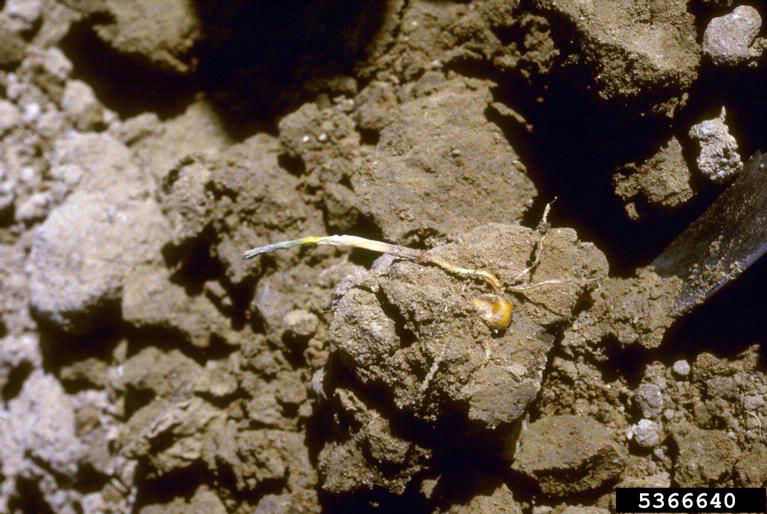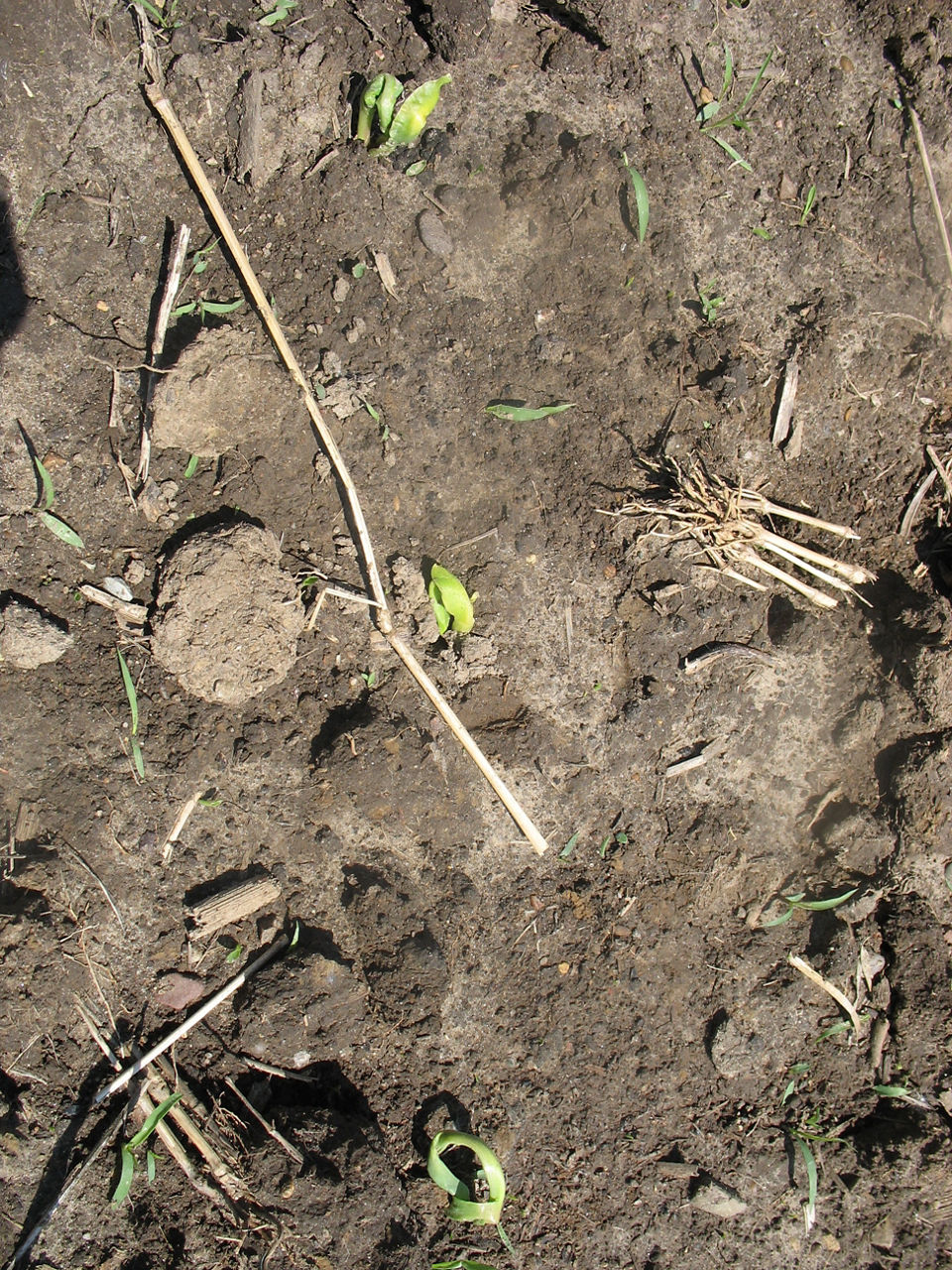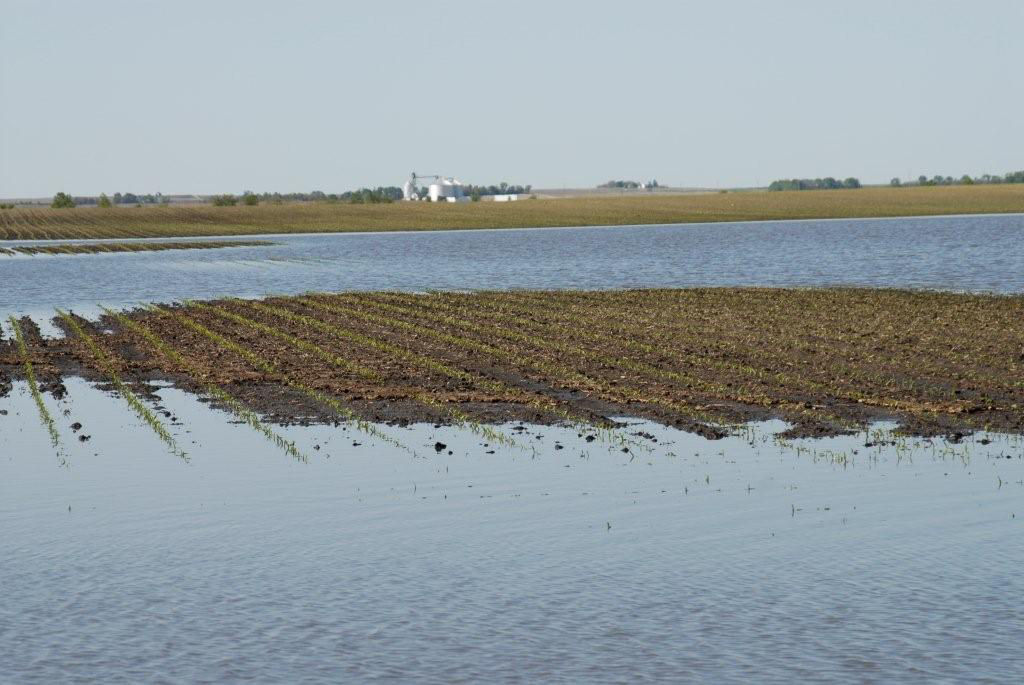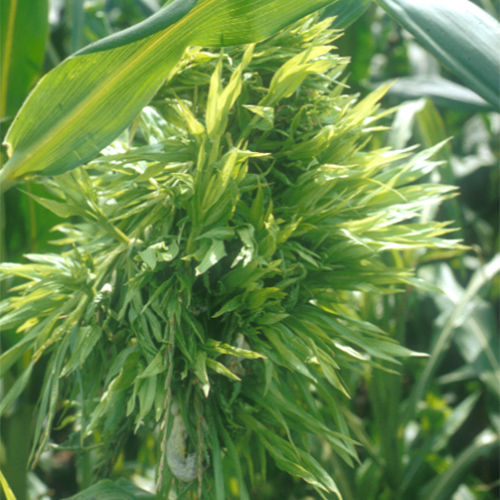10 MIN READ
Effects of Cold and Saturated Soils on Corn Germination, Emergence, and Growth
May 5, 2020



Compaction
Soil that becomes compacted when the planter’s soil-cutting equipment glazes the sides and bottom of the seed furrow when the soil is very moist or wet during planting can prevent seedling establishment. The seed’s first root or radicle may be unable to penetrate through the restricted soil causing the germinating seed to become stressed. Unable to grow deep, seminal and later roots follow the compacted walls of the seed furrow, which can limit nutrient and water uptake and result in malnourished seedlings.
It has been estimated that young corn plants can survive about 4 days of flooding if temperatures are relatively cool (mid 60s or less).3 If temperatures are warm (mid 70s or warmer) within 48 hours of soil saturation and the growing point is below the soil surface, survival may be less than 4 days due to depletion of soil oxygen.3 Without oxygen, root growth is inhibited, and nutrient uptake is diminished. Should soils remain saturated for a lengthy period after the water subsides, root growth may continue to be restricted. Research has shown that early-season flooding can cause yield reductions ranging from 5% to 32% depending on soil N status, flooding duration, and seedling stage of growth.4,5
Emerged plants should be checked about five days after a flooding incident. Examine the growing point by splitting the seedlings lengthwise. A healthy growing point should have a white to yellowish color while an unhealthy or dying growing point will be soft and grey or brown. Stand evaluations and plant health assessment can help determine if replanting is necessary.
Management Steps
Fungicide and insecticide seed treatments can help with stand establishment and protect early corn development from pests.
Planting depth can be critical in extremely saturated soil. Seeds that are slightly “higher and drier” can get some oxygen and survive. Conversely, those seeds planted just a half inch deeper or in a slight dip may be killed. It is recommended to adjust planting depth on a field by field basis depending on conditions. Typically, corn seed should be planted at 1½ to 2 inches deep to provide protection from cold air temperatures on the soil surface and for adequate root development. In areas where very wet-natured soils are common, shallower planting depths may be desirable to help quicken emergence in situations where deeper plantings may cause seedlings to die due to lack of oxygen. In drier soils, deeper planting up to 2 inches can be advantageous to get the seed into moisture and help maximize root development.
Continue to monitor and change planter settings when large changes in the field moisture level occur.
Knowledge of local soils and keeping an eye on the weather can help you make the best springtime planting decisions.
Sources:
1Nielsen, R.L. 2014. The emergence process in corn. Corny News Network. Purdue University. https://www.agry.purdue.edu/.
2Nielsen, R.L. 2019. Emergence failure of corn. Corny News Network. Purdue University. https://www.agry.purdue.edu/.
3Nielsen, R.L. 2019. Effects of flooding or ponding on young corn prior to tasseling. Purdue University. Corny News Network. http://www.agry.purdue.edu/.
4Timmermann, A., Jackson-Ziems, T., Elmore, R., Williams, T., and Krienke, B. 2018. Flooding and ponding in corn. CROPWATCH. University of Nebraska-Lincoln. https://cropwatch.unl.edu/.
5Ciampitti, I., Roozeboom, K., and Jardine, D. 2014. Effect of flooded and water-logged soils on corn growth and yield. Kansas State University Extension. Agronomy e-Updates, Issue 460. https://webapp.agron.ksu.edu/.
Additional Sources:
Elmore, R. and Abendroth, L. 2008. Flooded corn and saturated soils. Integrated Crop Management News. Iowa State University Extension. https://lib.dr.iastate.edu/.
Elmore, R.W., Owen, M.D., and Abendroth, L. 2006. Did the recent cold weather affect corn germination and seedling growth? Iowa State University. Integrated Crop Management News. https://lib.dr.iastate.edu/.
Nielsen, R.L. 2006. Crappy stands of corn. Corny News Network Articles. Purdue University. http://www.agry.purdue.edu/.
Nielsen, R.L. 2020. Heat unit concepts related to corn development. Purdue University Extension. https://www.agry.purdue.edu/ext/corn/news/timeless/HeatUnits.html
Nielsen, R.L. 2019. Predict leaf stage development in corn using thermal time. Purdue University Extension. https://www.agry.purdue.edu/ext/corn/news/timeless/VStagePrediction.html.
Web sources verified 2/13/20.
4013_S2




